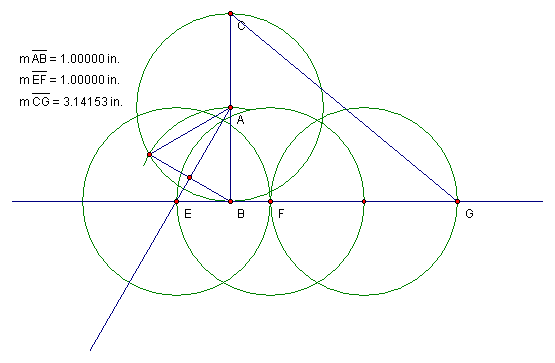
The ratio of the diameter to the circle to its circumference has a special name: pi. The number pi is irrational and non-repeating, meaning that there is no fraction or decimal that can ever define it exactly. Pi approximately equals 3.1415926535897932385. Of course, this is only an approximation.
Click here for 1,000 digits of pi.
Click here for 10,000 (this link takes you to another website)
In most cases, however, 3.14, 3.14159, or 3.14159265359 is all you need for any calculation. Pi is useful in calculation because you can use it to calculate a circle's circumference and its area.
Click here for a list of useful mathematical formulas, some of which use pi.
Kochansky was a monk who enjoyed geometry. He figured out how to make a construction that gives an approximation of pi. Since pi is irrational, it is impossible to make a completely accurate construction of it using rational numbers.
Draw a line (In this case it is horizontal)
Draw a perpendicular to the line. Call the intersection B.
Draw a circle around the midpoint of the perpendicular. (Circle A)
Draw an equilateral triangle around one on the radiuses (radii) as shown.
Bisect the triangle's angle (Bisector AE)
Make Circle E with radius EF on the first line you drew. (EF equals AB)
Mark off two more. Where the last circle intersects the line, put a point G.
If CB is a diameter = 2, the CG = 3.14153, which is about equal to pi.

Click here to return to Ian's Geometry Forum.